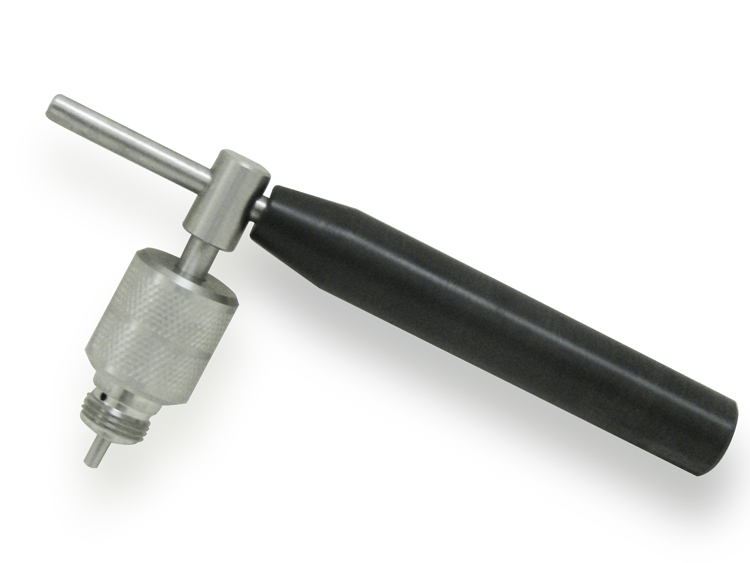Since calibration gases have a
limited shelf life, they have to be replaced routinely. Some cylinders may be
emptied and shipped back to the manufacturer to be reused, but the majority of
cal cylinders need to be disposed of—or preferably—recycled.
While the chemicals contained in the cylinders may be dangerous at higher concentrations, calibration gases appear at much lower concentrations and do not typically pose a hazard.
Calibration gas cylinders are still considered hazardous, however, because the gas is compressed inside the cylinder. For this reason, calibration cylinders require a few extra steps for recycling or disposal.
Step 1: Release Gas from Cylinder
The first step is to drain the cylinder of all pressure. This can be accomplished by bleeding off the gas with a preset flow regulator. Always perform this step in a well-ventilated area.
Step 2: Remove Pin Using Recycling Tool
Use a cylinder recycling tool to push the valve stem into the cylinder. This step is a clear indication that the cylinder is empty and cannot hold pressure.
IMPORTANT: Be sure to never use a recycling tool on an reusable cylinder, since the process will render the cylinder useless.
 The ASI-4250 recycling tool is used for most cylinders, the notable exception being 34L steel cylinders. are convenient portable gas detection systems.
The ASI-4250 recycling tool is used for most cylinders, the notable exception being 34L steel cylinders. are convenient portable gas detection systems.
Recycling tools are available with either male or female threads. It is critical that the right tool is used. The ASI-4250 is the most common recycling tool. It is used on all aluminum and larger steel cylinders. The ASI-4260 is used on the 34L steel cylinders.
The recycling tool is used by simply threading it into the cylinder and slowly turning the handle clockwise until the valve stem falls into the cylinder.
Step 3: Mark the exterior of the cylinder as empty
Write “Empty” on the outside of the cylinder. Even with the pin removed, it is helpful to have a more immediate visual reminder that the cylinder is empty and no longer a hazardous material.
Step 4: Dispose, Recycle, or Ship Cylinder
When these steps have been completed, you may dispose or recycle the cylinder according to local regulations.
Alternatively, we accept empty cylinders for recycling as a service to our customers. Click here for more details or feel free to email us with any questions.
This entry was posted in no categories.